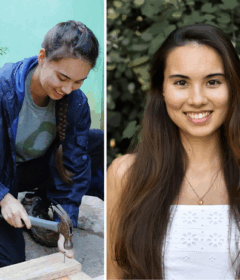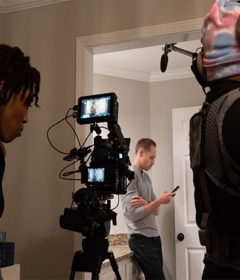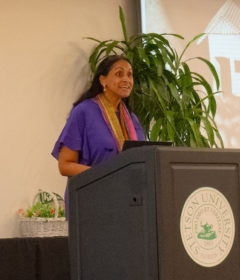Stetson Art History Student Writes Her Own Ticket to the World (CUR)
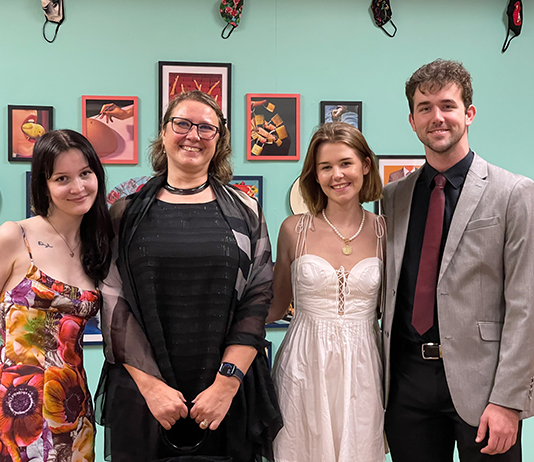
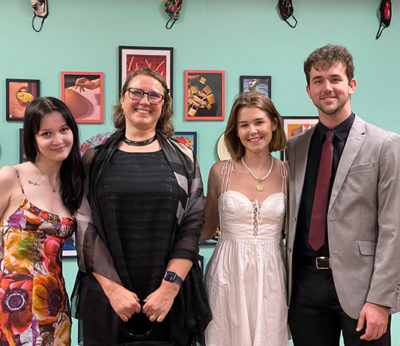
Stetson University Art History senior Lily Paternoster might just be the hottest ticket in town.
So hot, in fact, that the newly-established La Valle Fund is buying her ticket to travel to the prestigious WorldCUR (Congress of Undergraduate Research) conference at the University of Warwick, Coventry UK – a prestigious international conference for undergraduate research with a less than 1 in 10 acceptance rate.
Lily will present her most recent research paper which theorizes the impact of artist Jean-Michel Basquiat’s merchandise on his legacy.
“On April 2 I will leave for Birmingham Airport, set to present my research on the commodification of Basquiat,” explained Lily. “I am nervous, obviously, but truly excited to return to England, where I formerly studied creative writing and have the opportunity to expand the reach of my research.”
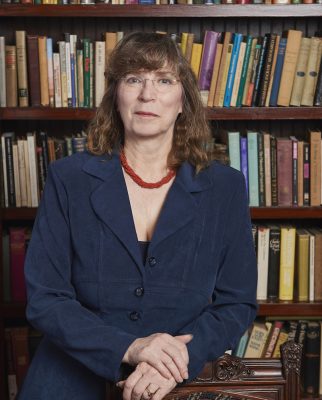
Kimberly D. S. Reiter, PhD, associate professor of History at Stetson serves on the CUR board and explained that, while Lily is not the first Stetson student to achieve this honor, it is a significant achievement.
“Those of us who review for World Congress try to balance international participation. Because of the large number of projects submitted from American universities, our national acceptance rate is very low, about 9% of a pool of submissions from students at the top of their academic fields,” she explained. “We are proud that Stetson research is so highly esteemed on an international stage. This is quite an accomplishment, and I am overjoyed as a CUR Counselor that Lily has this wonderful opportunity.”
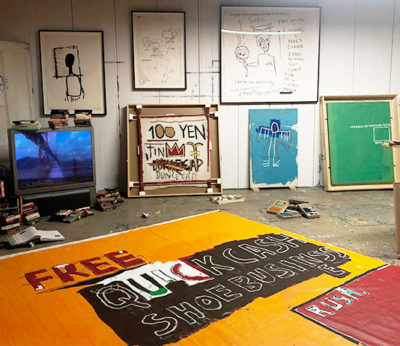
Lily grew up in Jacksonville, Fla., and became interested in art by her mother’s deep love of Impressionism and her lifelong commitment bringing Lily and her brother on many museum visits throughout their childhood. Lily was particularly taken the first time she saw Basquiat’s work.
“I was introduced to Basquiat in middle school and was captivated by the unapologetic harshness in his work. At that age, everything is uncertain except for misery and the grotesque nature of Skull, 1981 appealed to me,” she explained. “I went on to gorge myself on media related to Basquiat until it resulted in my research paper for freshman seminar, analyzing the collaboration and relationship between Basquiat and Warhol. I became interested in the impact of commodification on the legacy of Jean-Michel Basquiat after noticing a vast increase in brand collaborations with his estate in the last decade.”
Art merchandising is becoming a fast-growing segment in the art industry, yet art history as a discipline tends to dismiss it as mere marketing gimmick, she added. Lily’s research aims to challenge this attitude of critical suspicion by evaluating the commercial practice of art merchandizing and its impact on symbolic value of art being reproduced.
And there’s more.
As an undergraduate student, Lily curated not one but two exhibitions.
In April 2022, she was the recipient of SURE Grant (Stetson Undergraduate Research Experience Grant), the most prestigious academic award at the university.
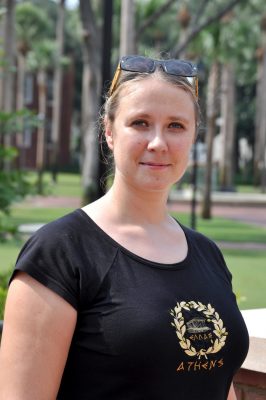
“Lily and her accomplishments are simply amazing,” explained Katya Kudryavtseva, PhD, associate professor of Art History at Stetson and Lily’s academic advisor. “Her SURE Grant project on Basquiat’s brand collaborations, which served as a basis for her Senior Research, is truly cutting edge.”
“In the course of my research, I have established that most of Basquiat’s brand collaborations purposefully sanitized the politically charged messaging behind his works, reducing his daring artistic project to a logo,” Lily explained. “The ultimate goal of my research is to create a motivation to follow the artist’s clearly outlined wishes in being displayed in museums, not keychains, t-shirts, or handbags.”
Now she’s ready to share this with the world.
-Trish Wieland

